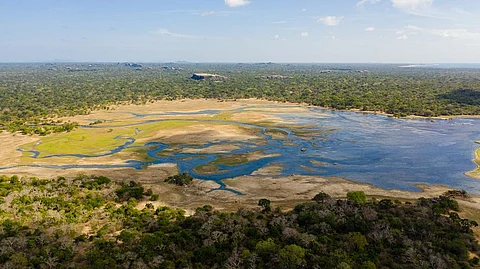

Salt marshes have been playing an outsized role in stabilising the environment. But more than 90 per cent of these biologically productive ecosystems may soon succumb to sea level rise by the turn of the century, according to a new research.
Scientists from the Marine Biological Laboratory (MBL) have been tracking vegetative cover in Great Sippewissett Marsh in Falmouth, Massachusetts, for the last 50 years to analyse the implications of higher nitrogen levels on marsh grass species.
Increased nitrogen favoured higher levels of vegetation and accretion of the marsh surface. However, these ecosystems won’t be able to outpace submergence from global sea level rise, noted the study published in journal Science of The Total Environment on March 28, 2023.
“Even under conservative sea level estimates…more than 90 per cent of the salt marshes of the world will likely be submerged and disappear or be diminished by the end of the century,” said Ivan Valiela, lead author of the study, in a press release.
At some point, if the sea level continues to increase at the rates that we anticipate, there will even be no more room for the low marsh plants. They’re just going to be too submerged to survive, said Valiela.
The only choice for salt marshes then would be to migrate landward. But even this choice can be impacted by anthropogenic activities and other factors.
Marshes all over the globe experience ‘coastal squeeze,’ where their movement is obstructed by sea level rise, anthropogenic activities and geographical factors. For instance, a seawall that protects a home from inundation will prevent a wetland from naturally migrating to higher ground.
“These barriers, whether they be geographic like a hill or a cliff, or people building along the edges of the ecosystem, constrain the potential for landward marsh migration,” said Kelsey Chenoweth, research assistant at MBL.
In a sea level rise scenario, the only solution left with plants will be to colonise new areas or to go uphill. But that migration may be impossible in some places.
“Sea level rise is the most important threat to salt marshes. We really need to figure out what’s going to happen to these ecosystems and learn how to prevent some of the losses from happening or try to adapt to them, so marshes can continue to play these important roles for nature as well as humans,” said Javier Lloret, a scientist at MBL.